Owning a dog comes with its fair share of surprises, and not all of them are the kind you’d welcome with open arms. Vet bills, especially unexpected ones, can add a lot of stress to your life and your wallet. But with a little planning and some clever strategies, you can face these situations head-on without losing your financial footing. Here are 17 actionable tips to help you prepare for those sudden expenses while ensuring your furry friend gets the care they deserve.
1. Start an Emergency Pet Fund
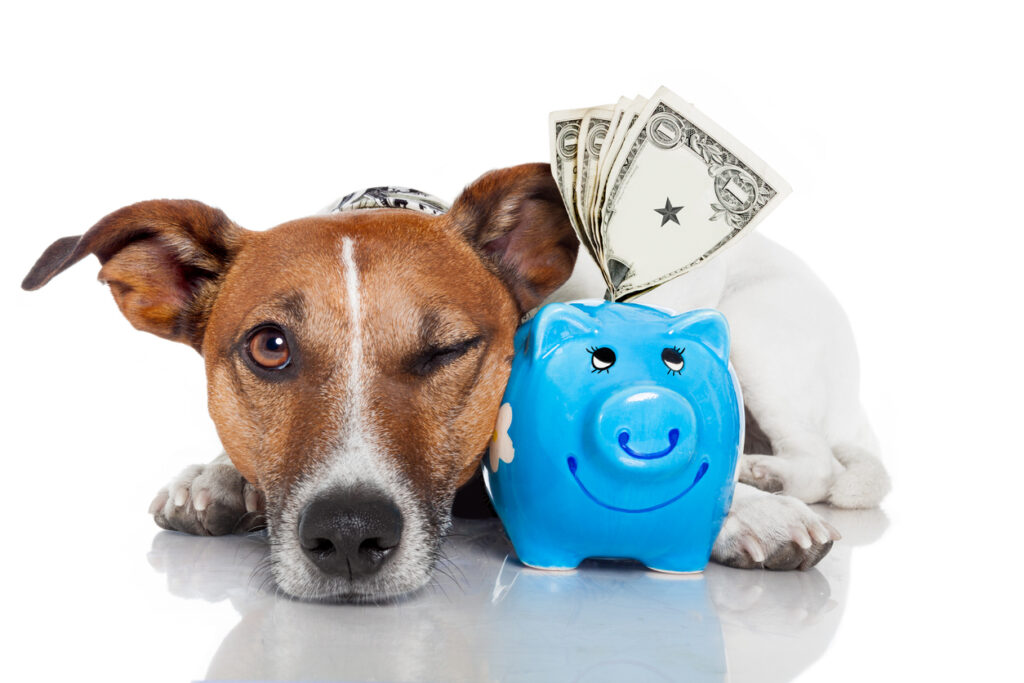
iStock/damedeeso
One of the simplest ways to prepare for unexpected vet bills is to set up an emergency pet fund. Think of it like a savings account specifically for your dog. Aim to set aside a small amount each month, even if it’s just $20. Over time, these contributions can add up to a safety net for unexpected costs. Keep this fund separate from your regular savings to avoid dipping into it for non-pet-related expenses. You can use a high-yield savings account to earn interest while your money sits there. Having this fund ensures that you’re financially ready for emergencies like sudden injuries, illnesses, or even surprise surgeries. Not only does it save you stress, but it also means your dog can get immediate care when they need it most. A well-funded emergency account is a game-changer in responsible pet ownership.
2. Invest in Pet Insurance
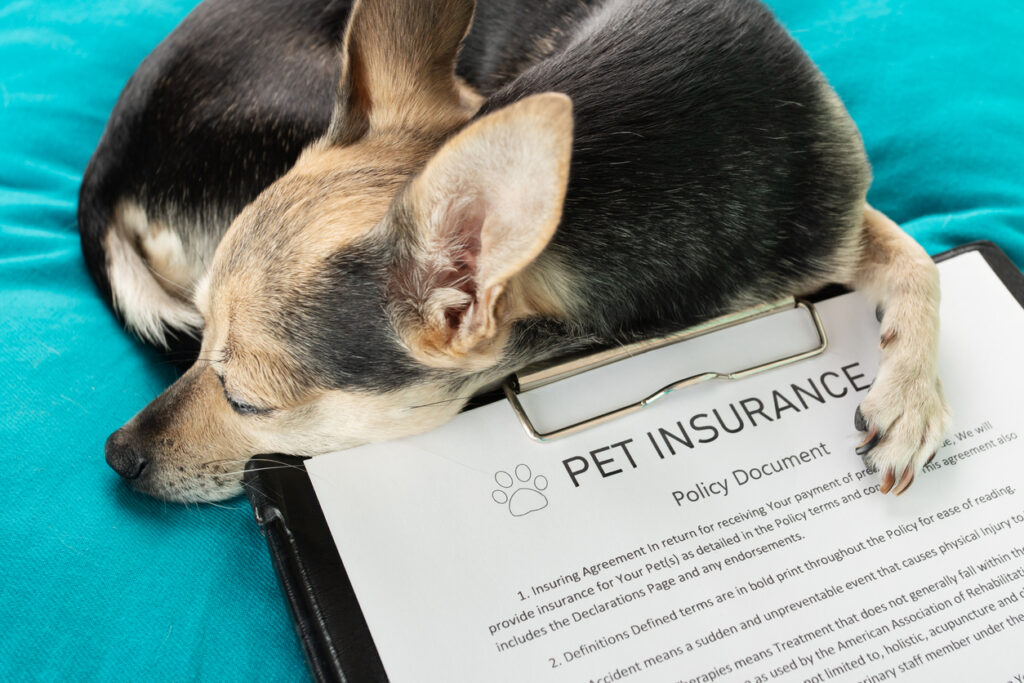
iStock/Yana Tikhonova
Pet insurance can be a lifesaver—literally and financially. While it’s an additional monthly expense, it can significantly reduce the cost of emergencies and major treatments. Plans typically range from $20 to $70 per month, depending on your dog’s age, breed, and health history. Research and compare policies to find one that suits your needs, and don’t forget to read the fine print. Some plans cover routine care, while others focus solely on emergencies. Make sure you know what’s included and excluded before committing. Insurance provides peace of mind and can prevent you from having to make heartbreaking decisions based on cost. Additionally, many policies offer add-ons like dental care or alternative therapies. While it’s an investment, it can save you thousands in the long run, especially if your dog develops a chronic condition or requires surgery.
3. Research Low-Cost Veterinary Clinics
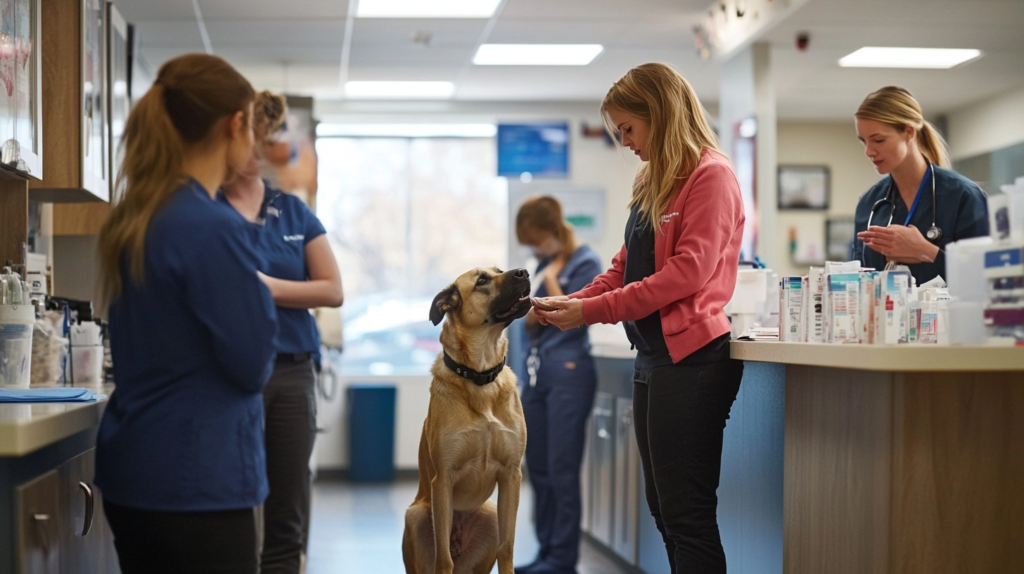
Stockcake
Low-cost veterinary clinics or nonprofit organizations can be a great resource for affordable pet care. These clinics often provide vaccinations, spaying or neutering, and even some emergency services at reduced rates. Some areas also have mobile vet units that offer affordable care. Keep a list of these resources handy so you know where to turn if an emergency arises. Additionally, some veterinary schools offer discounted services through teaching clinics. These clinics are staffed by students under the supervision of experienced veterinarians, ensuring quality care at a fraction of the cost. While they may not replace a regular vet, they can be a lifesaver for managing unexpected expenses. Researching these options in advance gives you peace of mind and a backup plan for urgent situations.
4. Use Preventative Care to Reduce Risks
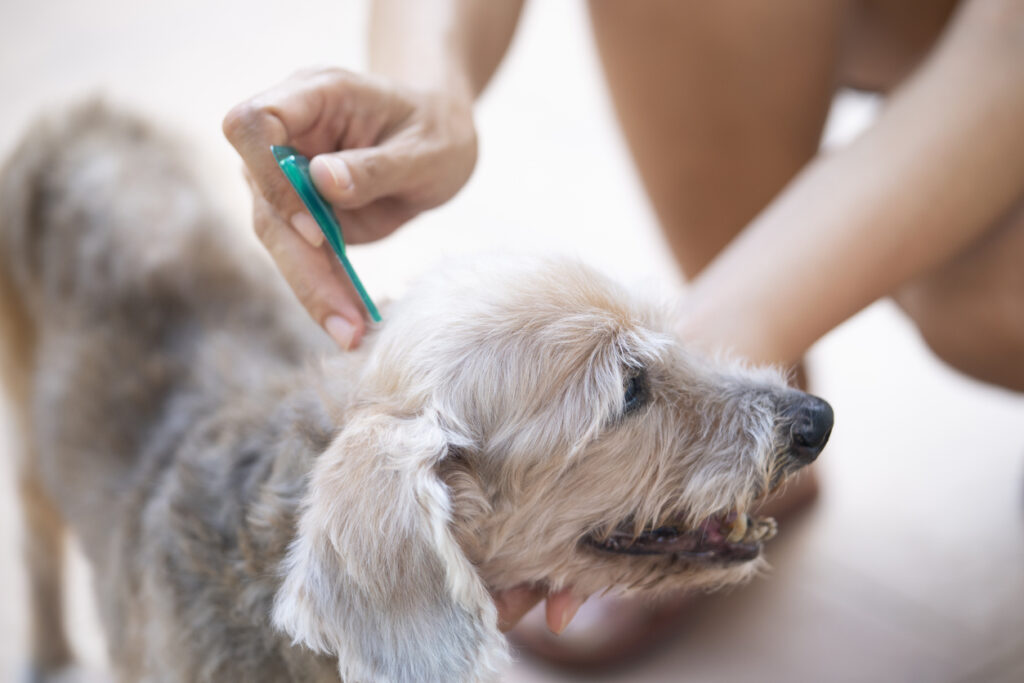
iStock/Tatomm
Investing in preventative care can save you thousands in the long run. Regular checkups, vaccinations, and dental cleanings help catch issues early before they become costly emergencies. Flea, tick, and heartworm prevention are other must-haves to avoid expensive treatments later. Preventative care not only extends your dog’s life but also keeps your budget in check. Discuss with your vet which preventative measures are most crucial for your dog’s breed and lifestyle. For example, some breeds are prone to dental issues or joint problems that can be mitigated with early intervention. While it might feel like an extra expense now, it’s a smart way to avoid unexpected vet bills down the road. Prevention truly is the best medicine—for your dog’s health and your wallet.
5. Create a Pet Health Calendar

iStock/:John Kevin
Keeping track of your dog’s health needs can help you stay ahead of costly surprises. A pet health calendar ensures you never miss vaccinations, routine checkups, or flea and tick treatments. Staying on top of these regular care milestones can prevent bigger issues from developing. Use apps, spreadsheets, or even a physical planner to track your dog’s appointments and treatments. Many vets also offer reminder services. Regular care keeps your dog healthy and happy while reducing the risk of expensive medical problems. With a clear calendar, you can also budget better for upcoming expenses, spreading costs out over time instead of facing them all at once.
6. Look Into Veterinary Payment Plans

iStock/Prostock-Studio
If you’re faced with a large, unexpected vet bill, ask your veterinarian about payment plans. Many clinics offer flexible payment options to help pet owners manage costs over time. Some vets partner with third-party financing companies like CareCredit, which provides short-term, interest-free payment plans if paid off within a certain period. Discuss these options with your vet ahead of time so you’re prepared if an emergency arises. Payment plans can alleviate immediate financial stress while ensuring your dog gets the care they need. Just make sure to understand the terms, including any potential interest rates or late fees, to avoid surprises.
7. Open a Credit Card for Pet Expenses

Pexels
A dedicated credit card for pet-related expenses can be a valuable tool for managing vet bills. Look for a card with low interest rates or cashback rewards to make the most of your spending. Use this card exclusively for pet expenses to keep your finances organized. While credit cards shouldn’t be your primary solution, they’re a useful backup for emergencies. Just be sure to pay off the balance as quickly as possible to avoid high-interest charges. Some credit cards even offer promotional periods with 0% APR, giving you time to pay off large expenses without additional costs.
8. Explore Crowdfunding Options

Pexels
When an unexpected vet bill exceeds your financial capacity, crowdfunding can be a way to bridge the gap. Platforms like GoFundMe or Waggle allow pet owners to raise money specifically for veterinary care. Share your story, include photos of your dog, and be transparent about the costs. While it may feel awkward to ask for help, you’d be surprised at how willing friends, family, and even strangers are to support a beloved pet in need. Crowdfunding not only helps cover costs but also creates a community of supporters who care about your dog’s well-being.
9. Join a Pet Savings Program

PickPik
Some companies and organizations offer pet savings programs or memberships that provide discounts on veterinary care, helping to ease the financial burden of pet ownership. These programs usually require an annual fee, but the savings they offer on everything from routine check-ups to emergency procedures can add up over time. Popular options include Pet Assure and the ASPCA’s Pet Health Insurance, though there are many others available. It’s a good idea to research local and national options to find one that fits your needs and budget. With these memberships, you can keep your furry friends healthy without breaking the bank, making both planned visits and unexpected emergencies more affordable.
10. Ask About Discounts or Specials at Your Vet

FMT
Many veterinary clinics offer discounts or specials that can save you money. For instance, some provide lower rates for senior citizens, military personnel, or multi-pet households. Others may have discounted vaccine days or wellness plans that bundle services for a reduced price. It never hurts to ask your vet about available options, as these can vary by clinic. Establishing a good relationship with your vet can also work in your favor. If they know you’re committed to your dog’s care but facing financial constraints, they might offer flexible payment options or suggest cost-effective treatment alternatives. A simple conversation can often uncover hidden savings that make a big difference in your budget.
11. DIY Some Non-Essential Pet Care
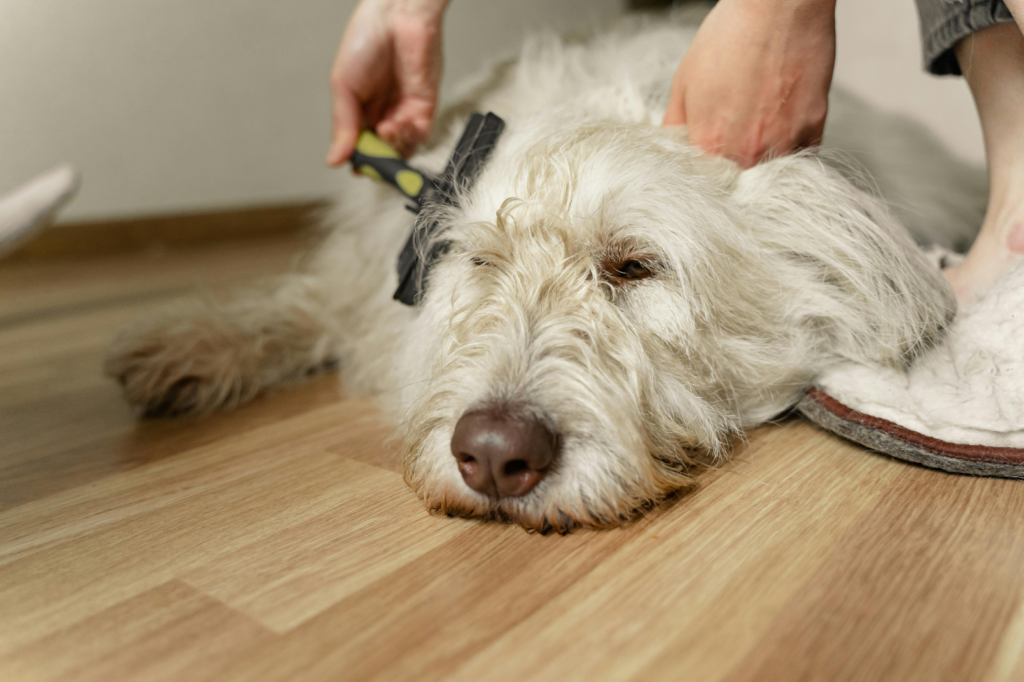
Pexels
While professional grooming and accessories are nice, not all pet care tasks need to come with a hefty price tag. You can save money by learning to trim your dog’s nails, bathe them, or brush their coat yourself. Investing in basic grooming tools pays off quickly and helps you avoid frequent trips to the groomer. For smaller items like toys or beds, consider DIY projects using household materials. Plenty of online tutorials can guide you through creating safe, fun, and inexpensive alternatives. While it’s crucial to rely on professionals for medical care, there’s no harm in handling non-essential tasks to keep costs low while still pampering your pup.
12. Build a Relationship with Your Vet
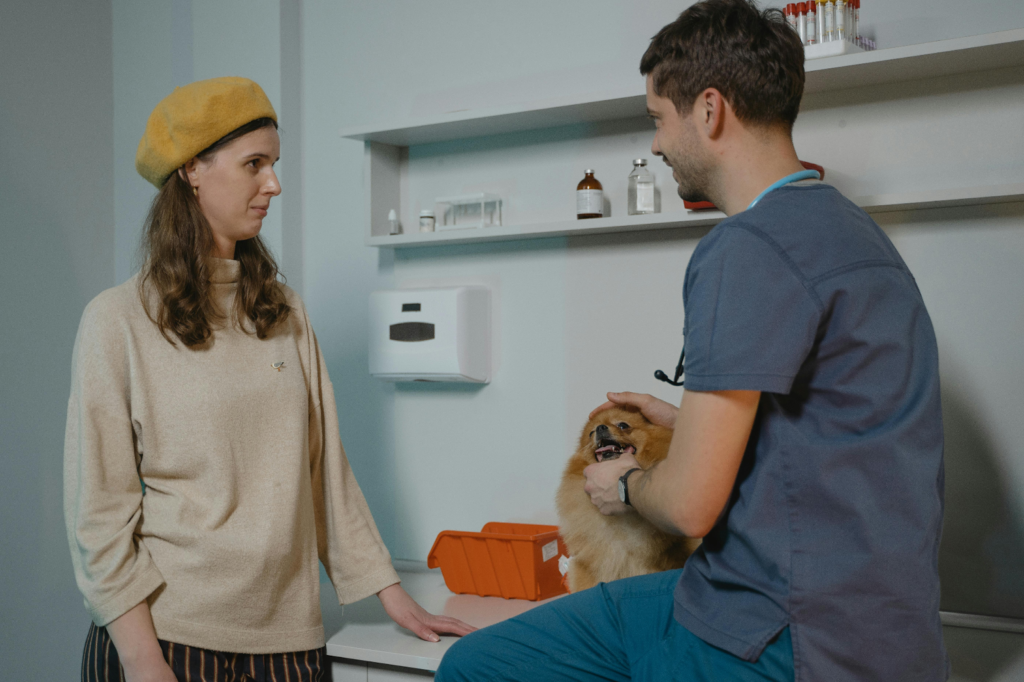
Pexels
Building a strong rapport with your veterinarian can lead to better care and even financial flexibility. A vet who knows you and your dog may be more willing to discuss cost-effective treatment options or offer payment plans during emergencies. Regular visits also give your vet a chance to understand your dog’s health history, making it easier to identify issues early and suggest preventative measures. Communication is key—don’t hesitate to ask questions about recommended treatments and their costs. By being open and proactive, you create a partnership focused on your dog’s well-being and your budget.
13. Keep Your Dog’s Weight in Check

FMT
Maintaining a healthy weight is one of the simplest ways to prevent health issues and avoid costly vet bills. Overweight dogs are at risk for a range of conditions, including diabetes, arthritis, and heart disease—all of which can require expensive treatments. Work with your vet to determine the right diet and portion sizes for your dog’s breed, age, and activity level. Regular exercise is equally important, whether it’s daily walks, playtime, or trips to the dog park. Preventing obesity not only saves you money but also ensures your dog lives a longer, happier life.
14. Prepare for Aging-Related Costs

GoodFon
As dogs age, their healthcare needs often increase. Preparing for these costs in advance can make them more manageable. Set aside extra savings as your dog enters their senior years, and consider updating your pet insurance to include coverage for age-related conditions. Regular checkups become even more important for catching issues early. Be proactive about dental care, joint supplements, and other preventative measures to minimize complications later. Planning ahead for aging-related expenses ensures you’re financially ready to support your dog’s golden years.
15. Stay Educated on Pet Health Trends

PxHere
Staying informed about pet health trends and advancements can help you make cost-effective decisions for your dog’s care. For example, some conditions that once required surgery may now have less invasive and more affordable treatment options. Follow reputable veterinary blogs, join pet owner forums, or ask your vet about emerging techniques and technologies. Knowledge is power, and staying educated helps you advocate for your dog’s health while managing costs effectively. By keeping up with the latest information, you can ensure your dog receives the best possible care without breaking the bank.


